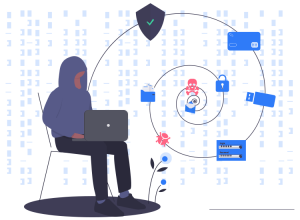
However, most of the domestic media and social network responses in Japan emphasized the nation’s place “among the lowest tier of major nations,” which indicates that the true message to Japan in this report is not being conveyed. In other words, the organization sees Japan as having serious weaknesses in its cyber capabilities.

Attacks like these are carefully planned since they would need to first identify a target, study their strategies, and find out which information they need to steal. Cyberspies can target government networks or private companies. The goal is to gain competitive, financial, security, and even political advantage over a rival. Many believe that the campaign was the work of the US and Israeli governments in an effort to thwart an Iranian nuclear threat, although both countries have denied the claims. The worm managed to damage plenty more equipment the entire year before it was discovered. Staff monitoring the equipment were thus unaware of what was happening until the equipment began to breakdown and self-destruct. It altered the instructions sent to the equipment all while sending false feedback reports to the main controller.
Cyber espionage 2012 software#
It then searched the infected PCs for Siemens Step 7, a software used to automate and monitor the facility’s equipment.
Cyber espionage 2012 windows#
Once inside the system, the worm spread through Microsoft Windows computers. An unsuspecting victim unwittingly helped take the digital weapon into the protected facility via an infected USB. The planned attack initially targeted five outside organizations that were found to be working directly or indirectly with people and thus connected to Iran’s nuclear program. You might be wondering how attackers infiltrated such a protected facility.

Related: Is Cyberwar the Next Threat to Your Security? It has the potential for the greatest impact on computer systems, the internet, and people’s lives. The goal is the same as that of a war launched using conventional military force. As such it is well-planned and well-funded. What makes this different from all other forms of cyberattacks is that it is an organized effort by a nation-state against another foreign nation. Simply put, it is a war that has migrated into cyberspace. Although according to a paper by national security experts at the US Congressional Research Service (CRS), there are elements that constitute cyberwarfare.Ī cyberattack can be considered an act of war if it is "a state-on-state action equivalent to an armed attack or use of force in cyberspace that may trigger a military response with a proportional kinetic use of force." There are still no clear criteria or a standard definition that could define a cyber act of war. To help you understand each of these threats and learn how these can possibly affect people’s lives let’s define each of them.


 0 kommentar(er)
0 kommentar(er)
